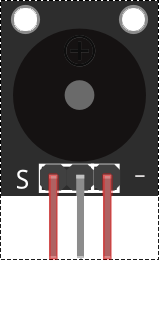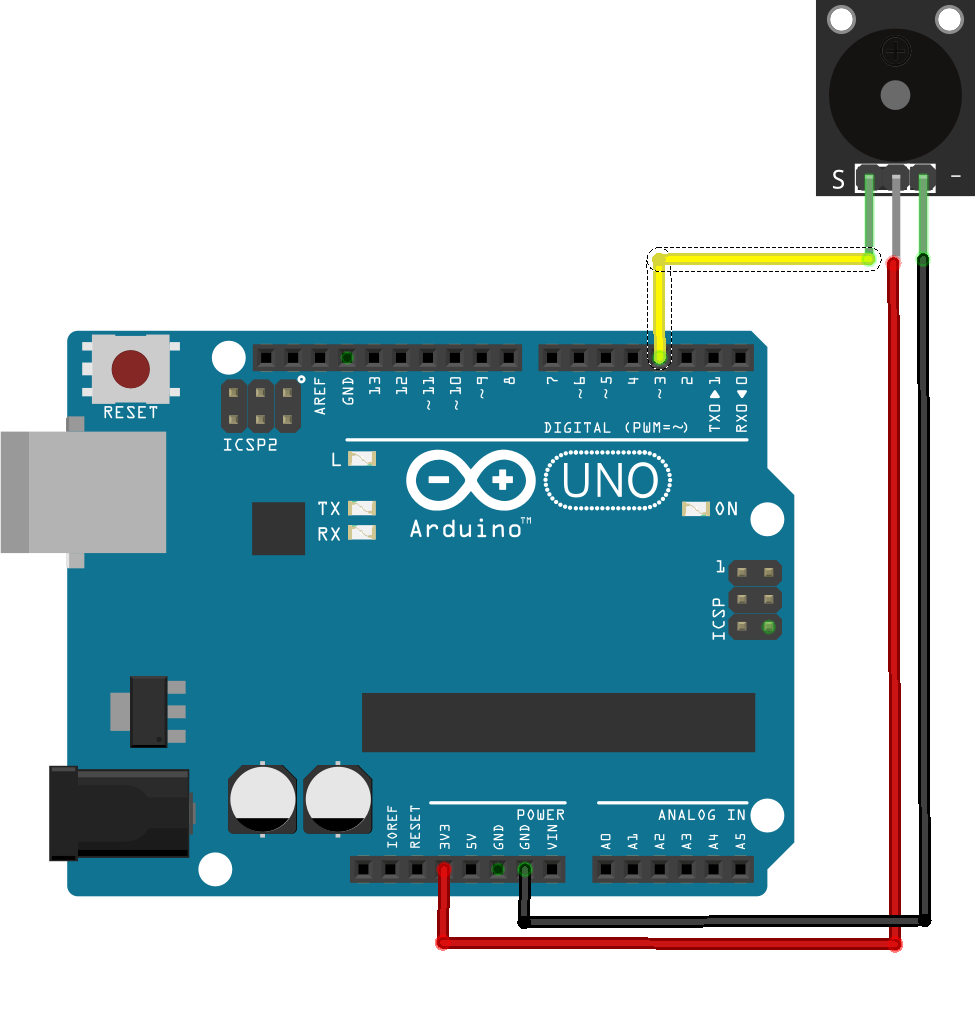KY-012 ACTIVE BUZZER MODULE and KY-006 PASSIVE BUZZER MODULE
 Click Here to View Step by Step
Click Here to View Step by Step
KY-012 ACTIVE BUZZER MODULE and KY-006 PASSIVE BUZZER MODULE
Same KY-012 and KY-006 code ARDUINO IDE
Short description :
The KY-006 Passive Piezoelectric Buzzer module can produce a range of sound tones depending on the input signal frequency.
The KY-012 Active Buzzer module produces a single-tone sound when it receives a high signal. To produce different tones.
Working with (Compatible)
Arduino, ESP32, Nodemcu, ESP8266, Raspberry Pi, and ......


ARDUINO IDE CODE
Example description :
Arduino Sketch will continually turn the buzzer on and off generating.
int buzzerPin = 3;
void setup ()
{
pinMode (buzzerPin, OUTPUT);
}
void loop ()
{
for (int i = 0; i < 100; i++) { // make a sound
digitalWrite(buzzerPin, HIGH); // send high signal to buzzer
delay(1); // delay 1ms
digitalWrite(buzzerPin, LOW); // send low signal to buzzer
delay(1);
}
delay(500);
}
Another Example of different tones :
int speakerPin = 3;
int length = 26;
char notes[] = "eeeeeeegcde fffffeeeeddedg";
int beats[] = { 1, 1, 2, 1, 1, 2, 1, 1, 1, 1, 4, 1, 1, 1, 1, 1, 1, 1, 1, 1, 1, 1, 1, 1, 2, 2}; void playTone(int tone, int duration) {
for (long i = 0; i < duration * 1000L; i += tone * 2) {
digitalWrite(speakerPin, HIGH);
delayMicroseconds(tone);
digitalWrite(speakerPin, LOW);
delayMicroseconds(tone);
}
}
void playNote(char note, int duration) {
char names[] = { 'c', 'd', 'e', 'f', 'g', 'a', 'b', 'C' };
int tones[] = { 1915, 1700, 1519, 1432, 1275, 1136, 1014, 956 };
// play the tone corresponding to the note name
for (int i = 0; i < 8; i++) {
if (names[i] == note) {
playTone(tones[i], duration);
}
}
}
void setup() {
pinMode(speakerPin, OUTPUT);
}
void loop() {
for (int i = 0; i < length; i++) {
if (notes[i] == ' ') {
delay(beats[i] * tempo); // rest
} else {
playNote(notes[i], beats[i] * tempo);
} // pause between notes
delay(tempo / 2);
}
}